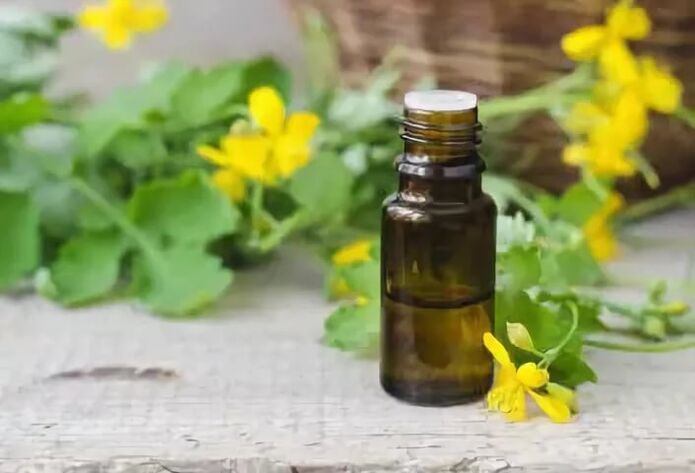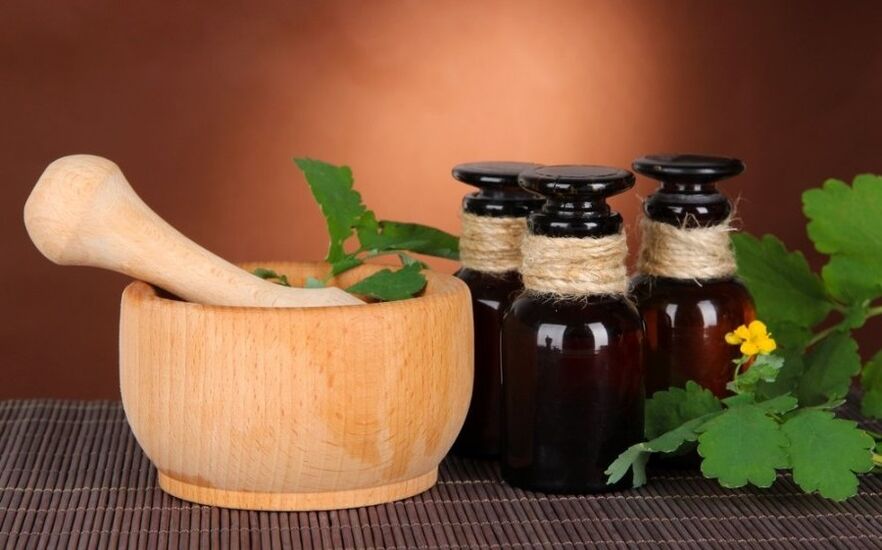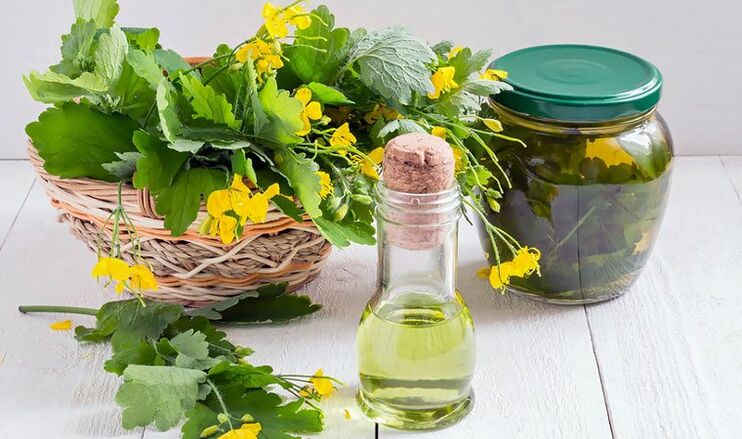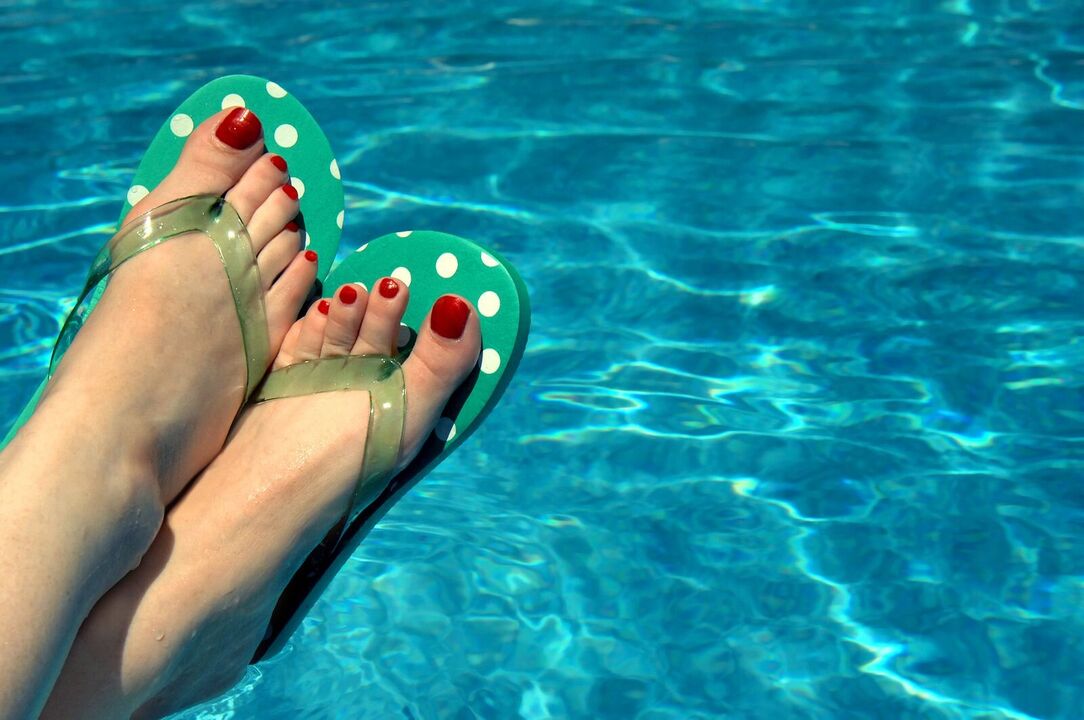
It is necessary to treat fungal diseases of the nails when the first signs of the disease are detected, as it will be more difficult to cope with a neglected disease. In addition, the infection can spread to other nails, the surrounding skin, interdigital folds. If we talk about the treatment of this disease in the initial stage, then it can be cured without the use of medication, using folk recipes. So celandine from toenail fungus is considered a particularly effective remedy.
Fungal infection of superficial tissues
Fungi that live on nails feed on the creatine contained in the dishes. This leads to crumbling, staining of the nails.
It loses luster, elasticity, can thicken or thin, grow poorly and be covered with waves. Most often, the disease affects the toenails, as the wet and warm environment in shoes, on the floor in saunas, baths and swimming pools is favorable for the fungus.
Too often, pathogens are resistant to the many medications that pharmacies offer us to treat onychomycosis. As a result, therapy with these drugs will not give the expected result and will lead to loss of money.
Many active ingredients of herbal medicines do not cause resistance to fungi, so they are more active than synthetic preparations.
That is why since ancient times, for the treatment of nails have been used various baths, creams, oils and tinctures based on celandine, to which many types of mold still have no resistance.
A fungal infection is eliminated especially effectively when you use celandine oil, as all the active ingredients are stored in it as much as possible.
Properties of celandine

Mountain celandine contains about 20 alkaloids, as well as chelidone, which slows down the growth of microorganisms that cause various forms of fungal infections.
Thanks to alkaloids, the reproduction of a fungal infection is suppressed, as are protozoa and bacteria that are resistant to many antibiotics.
In addition, the composition of the plant contains the following active substances:
- tannin compounds;
- phenolic acids and organic acids;
- a small amount of essential oils;
- choline and histamine;
- carotene and vitamin C;
- enzyme;
- saponins;
- flavone.
Many alkaloids are more soluble in alcohol than they are converted to aqueous compounds. And berberines, which give the yellow color to the plant juice, dissolve only in hot water.
Before starting the treatment of nail fungus with celandine, you should consult a doctor, as the alkaloids of this plant are toxic substances.
Of course, when used externally, they do not have a toxic effect on the body, but when swallowed can lead to dangerous consequences.
At a pharmacy, you can buy liquid celandine from nail fungus. It is allowed to be used only in extreme cases, as it contains concentrated alkalis.
This tool destroys the cells with microorganisms (fungi and viruses) that have settled in them. This is why this medicine should be applied very carefully and only on the affected areas of the nail.
Pharmaceutical preparations of celandine
Before treating a fungal nail disease, it is necessary to understand the features and effects of medicines based on this plant. Due to the low content of volatile substances in celandine, essential oil is not made from it.
In cosmetology and pharmacology, oil extracts from the flowers of this medicinal plant are used.
Pharmacy oil extract contains an almost complete set of FCS from this herb. This medicine is used only externally without dilution.
The therapeutic effect is explained by the cauterizing, antimicrobial and keratolytic effect of the drug on the affected skin and horny plaques.
Celandine oil extract moisturizes, softens and cleanses the skin and horny formations, eliminates skin, irritation and dryness.
Nail fungus can be cured with this oil, but an allergy test should be done before use, as celandine can provoke urticaria. To do this, the oil is poured on the skin of the wrist and the result is evaluated after a quarter of an hour.
If there is no itching, blistering, irritation or redness, then it can be used for treatment.
Ointment and oil based on celandine
Ointment and oil remedy for celandine from foot fungus and horn formations can be prepared at home yourself. To do this, do the following:
- You will need the upper part of the shoots of this plant. They should be cut and washed thoroughly.
- Wait until the grass dries a bit, then grind it and extract the liquid.
- Pour this juice with vegetable oil, which was boiled in a water bath for disinfection.
- The drug should be injected for an hour in the dark.
- Then everything is poured into a dark glass bottle and left to inject for up to three weeks.
- During this time, the oily container should be shaken periodically.
- After this time, the oil is filtered and used for treatment.
It is not necessary to collect celandine in the field, in the yard or in the woods. This plant can be grown in a box on the balcony. Also, dried grass from a pharmacy is suitable for making oil. Insist in oil in the same way as fresh raw materials.
For the preparation of the ointment, powdered dry grass and medicinal Vaseline are used.
Some herbalists claim that only fresh grass will help with nail fungus. However, the extract of this plant has also been proven to have anti-inflammatory, analgesic and cauterizing properties.
The treatment of nail fungus with celandine (oil and cream) is performed as follows:
- In the evening we steam the legs. In the bathroom, you can add a little baking soda and laundry soap.
- Thoroughly dry the affected areas of the feet, nails and interdigital folds with a towel. We cut the reproduced edge of the nail, cut the softened affected areas of the nail plates with a nail file.
- Apply oil or ointment with a cotton swab or cotton pad to the sore spots.
- After that, we put on plastic bags and socks on our feet.
- The agent is left to act for ¾ hours. After that, before going to bed, rinse your feet with water and treat the affected nail plates with iodine.
Other celandine remedies
Celandine for the treatment of nail fungus can be used in the form of tinctures and as part of combined medicines. Below we list the most effective recipes:
- Pure plant juice should be wiped twice daily with diseased nail plates after being treated with hydrogen peroxide. Once the first part of the liquid has dried on the nail, the procedure is repeated twice more. Treatment continues until recovery.
- A complex mixture based on celandine for the treatment of fungi. You will need two drops of oregano herb juice and calendula solution, 5 drops of pure celandine juice and 120 g of water. This remedy is applied with a cotton pad to the affected nails three times a day until healing.
- Alcohol tincture is prepared as follows: a fresh plant is washed, dried and poured with vodka in a ratio of 1 to 2. Infuse for twelve days. After that, the treatment starts with five drops on each nail, bringing this amount to 20. The duration of therapy is up to two weeks.
- Bathroom with celandine. You will need 150 g of dry grass, which should be poured with boiling water (one and a half liters). The mixture should be injected for ¼ hours, after which it is filtered and boiling water (0, 5 l) is added to the infusion. In this water, the feet are steamed for about 20 minutes. After clearing the plaques of dead cells, the medicine prescribed by the doctor is rubbed into them.
Many traditional healers recommend supplementing the foot treatment with celandine baths with soda. To do this, for 1000 ml of water (hot), take 30 g of baking soda.
Boil the feet with steam for a quarter of an hour, after which carefully remove the softened affected areas and apply a celandine-based medicine. We take baths every day until recovery.
Also, a good effect will be from rubbing hydrogen peroxide on the affected horn formations and their subsequent treatment with a mixture of this medicinal plant powder and tea tree oil.
It may take you 6 months to a year to be treated with the methods listed. This is the time it takes a healthy nail to grow back.
During this time, it is necessary to observe foot hygiene and periodically disinfect shoes to avoid re-infection. To treat the shoes, you can use table vinegar or special sprays.
Recipe me celandine

Celandine herb for the treatment of nail fungus with a compress:
- Fresh leaves are crushed.
- Add a drop of tea tree oil.
- The mixture is applied to the diseased nail and fixed with adhesive film.
- The compress is removed after 3 hours.
- It is allowed to apply up to 3 times a week.
Celandine herb for the treatment of fungal applications:
- The leaves of the plant are placed in a jar and poured with sunflower or olive oil to cover the grass by a few centimeters.
- The mixture is stored in a dark room for several hours, then the jar is left in a cool place for 2 weeks.
- A cotton pad is soaked in the resulting oil and applied to the affected area.
- The fingers are covered with adhesive film for 2 hours.
- The drug is washed, the foot is treated with an antiseptic.
Contraindications
Before treating nail fungus, it is important to rule out contraindications. Pure liquid and celandine tincture are unacceptable in case of an allergic reaction and hypersensitivity to the composition of the drug.
An absolute contraindication is the use of the drug during pregnancy and lactation, as well as in childhood.
When applying celandine, you need to monitor the skin reaction. If there is severe irritation, hyperemia, a rash appears, you should abandon this option for the treatment of nail fungus.
It is not recommended to use celandine juice in its pure form, so it should always be diluted with warm water, regardless of the recipe.
Celandine has a pronounced disinfectant effect, therefore, in a short time it will kill all pathogenic microflora. Before using recipes with this poisonous plant, you should consult a dermatologist. The doctor will explain if it is possible to treat nail fungus with celandine, what are the contraindications and risks.
Measures to prevent nail fungus

You can protect yourself from the fungus simply by observing the rules of hygiene and preventive measures in time.
- In all public places (beaches, showers, locker rooms, swimming pools, baths, etc. ) we put slippers that are easily washed. Do not walk barefoot where there is a risk of infection!
- We do not wear someone else's shoes (including slippers at a party - it is better to walk in socks).
- We do not use other people's towels and manicure accessories.
- Coming out of the bathroom, we place our feet not on an ordinary rug (and often wet, not the first freshness), but on our towel (we share it in advance for such purposes).
- Check feet and nails regularly for signs of fungus. At the slightest symptoms (cracks / itching between the fingers, the color of the nail has changed, etc. ), we take action. That is, we buy ointments, specials / varnishes, etc.
- We try not to use tight, cramped shoes as well as shoes made from low quality materials.
- We regularly treat the inside of the shoes with antiseptics.
- To prevent foot sweating, use deodorant, talcum powder, etc.
- We use only cotton socks. If it is necessary to use tights / socks (nylon products and other synthetic fabrics), we should remove them at home, steam our feet and process them.
- In the heat, we wear open-toed shoes - for ventilation and free air exchange. Sweaty feet are the basis for the growth of bacteria.
- We do not measure shoes in stores without socks / footprints - barefoot.
- We wipe dry feet after bathing, including the spaces between the toes - this is where the fungus begins.
- We do not allow cracks in the feet - use moisturizer.
- Wash your feet with mild antibacterial soap.
- With a high risk of infection (for example, on vacation or in the pool), we use antifungal creams, powders or aerosols.
- Dry your shoes well if they get wet. We do not wear wet shoes / boots.
- We choose exclusively proven salons for the pedicure / manicure procedure.
- We do not allow squeezing, growing and deforming of the nails - we take measures in a timely manner.
























